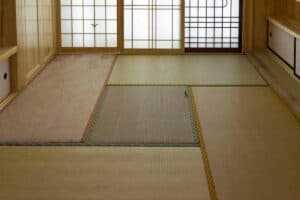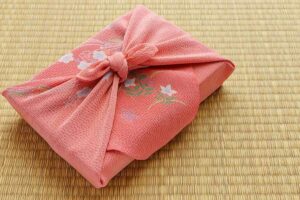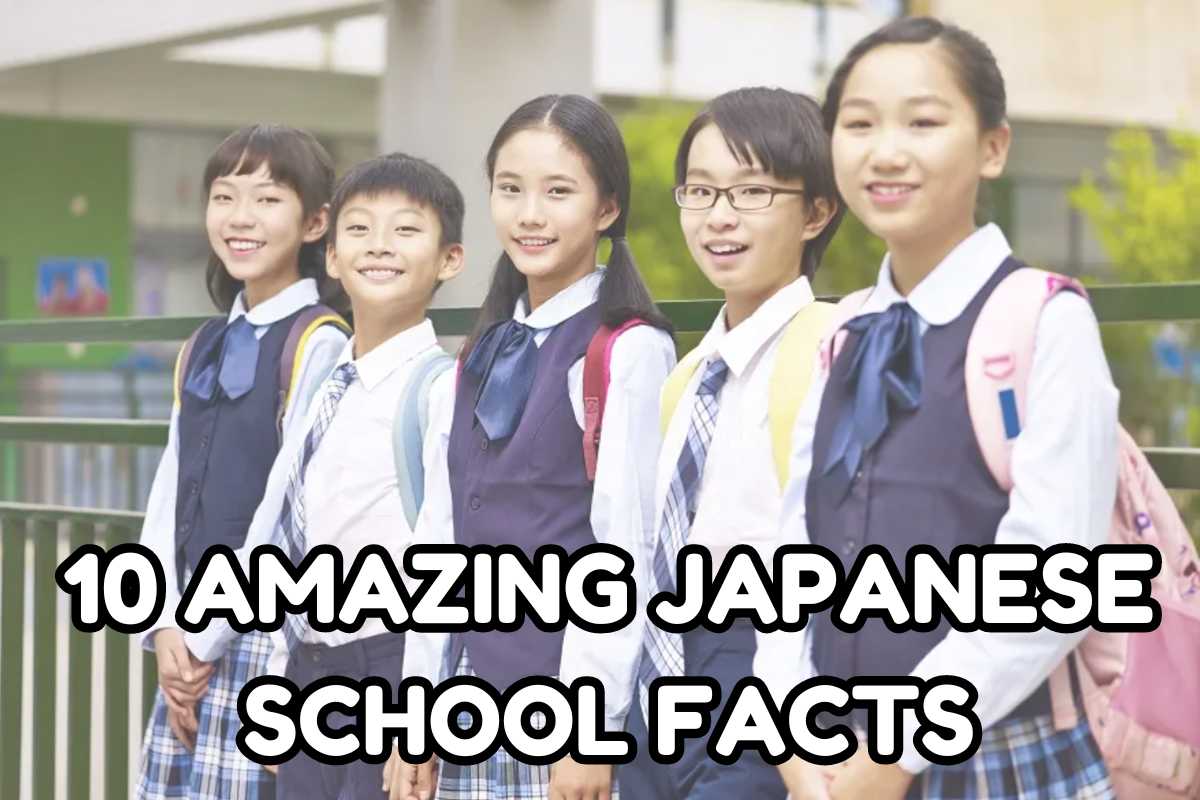A type of traditional Japanese garment, a white kimono is usually made from white fabric and worn for formal occasions, such as funerals and weddings.
In Japanese culture, the color white is associated with purity, simplicity, and elegance, and is often worn for events that require a sense of formality.
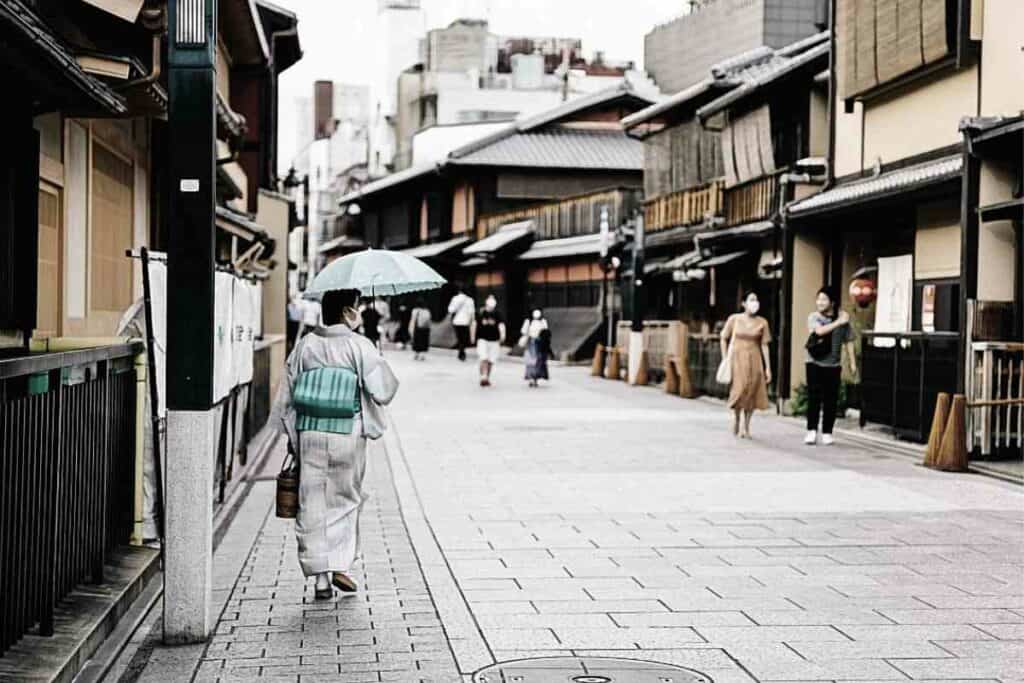
Let’s take a look at what a white kimono means.
Table of Contents
The Edo Period (1603-1868)
The white kimono dates back to this significant period.
The Edo Period was known to be an important era in Japanese history, bringing prosperity and a sense of stability to its people. It was named after the city of Edo, now known as Tokyo.
The white kimono, or shirokomon, quickly became the standard dress for both men and women. Its increase in popularity brought with it demand for a wider variety of colors and patterns.
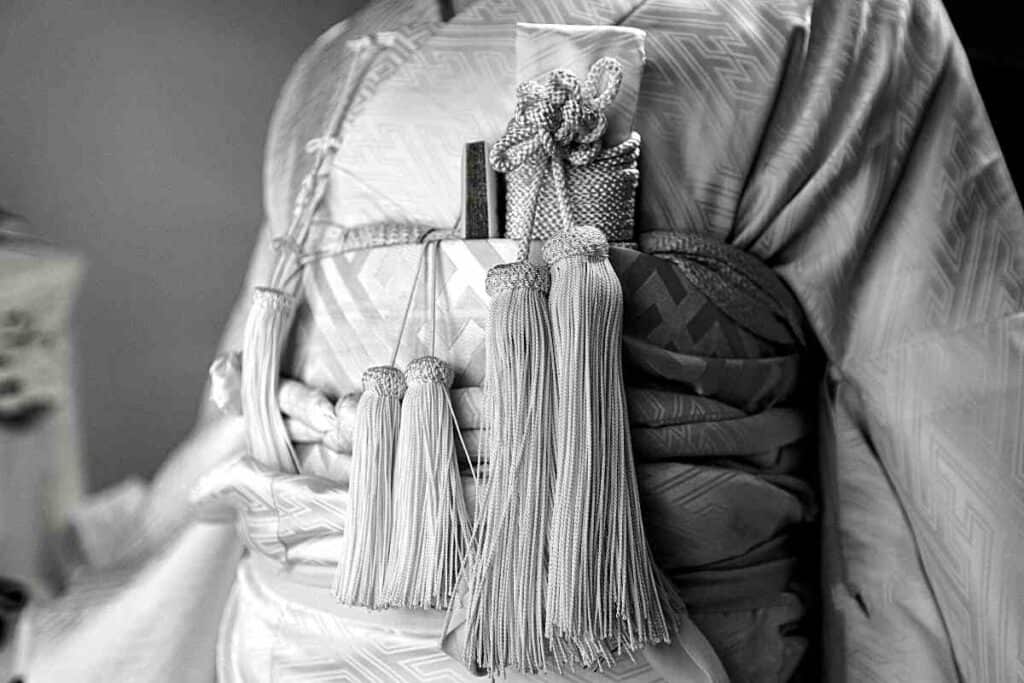
Later on in the Edo period, the white kimono became known for its symbolism of simplicity. Men and women would wear the white kimono for weddings, funerals, and tea ceremonies.
It was thought that the white color of the kimono, symbolizing purity, helped to ward off any evil spirits.
The Meiji Period (1868-1912)
The Meiji period saw a new leader Emperor Meiji, who ruled until he died in 1912.
It was around this time that a shift started in Japanese culture, leaning toward more modernized looks in fashion.
Fashions started to borrow more from Western ideas during this time of significant modernization.
This led to a decline in the popularity of the white kimono. People of the Meiji period still accepted this as an item worn for more traditional occasions, seeming to appreciate the rich culture behind it.
The social changes established in the Meiji period had a huge effect on fashion, with more Westernized styles creeping in. Western literature and art also saw a boom in popularity at this time.
Read Next 📖
When Would a White Kimono be Worn?
Usually, a white kimono would be worn under the following circumstances:
- When first starting out in martial arts
- By brides during a wedding ceremony
- For certain festivals
- For formal ceremonies, such as a tea ceremony
- At funerals and when in mourning
It is important to note that it is often seen as disrespectful to wear a white kimono outside of these occasions as it is seen as a special item reserved for formal settings only.
Martial Arts
When first starting martial arts, or gi, students will typically wear a white kimono. The symbol of white, meaning purity and innocence, marks the students’ willingness to learn.

The symbolism of the white kimono is explained thoroughly as part of the teachings, and its significance is respected by students of martial arts.
As students progress in martial arts, they will receive many different colored belts and gis. Their first white gi stands as a symbol of their initial commitment to their martial art.
Weddings and Funerals
Traditionally, a bride will wear a white kimono, or uchikake, for her wedding ceremony.
The color white represents innocence and purity and symbolizes her new phase in life as she enters into marriage.
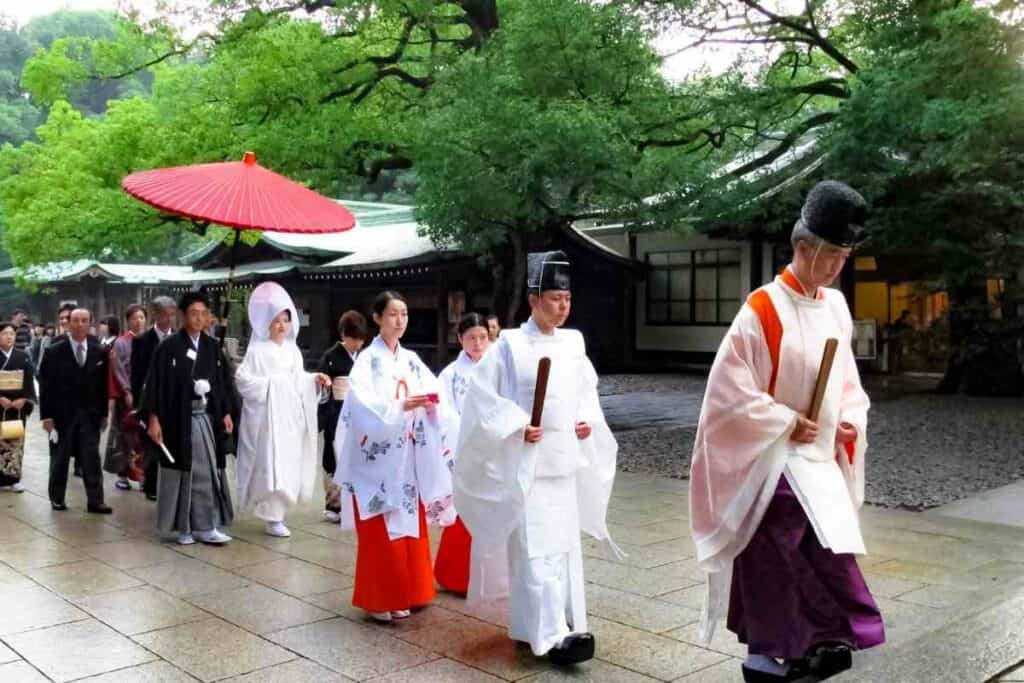
On his wedding day, a man may also wear an uchikake, but the color of this may vary. Not usually white, the groom will usually wear a dark-colored kimono with a haori jacket.
In Japanese culture, a deceased person will usually wear a white kimono. The color, in this circumstance, represents their abandonment of earthly wickedness, symbolizing the deceased person leaving the earth as a pure spirit.
People attending a funeral will commonly wear a white kimono as well. White, in Japanese culture, is the color for mourning and is traditional funeral wear.
Festivals
Although not commonly worn to festivals, there are some exceptions to this rule.
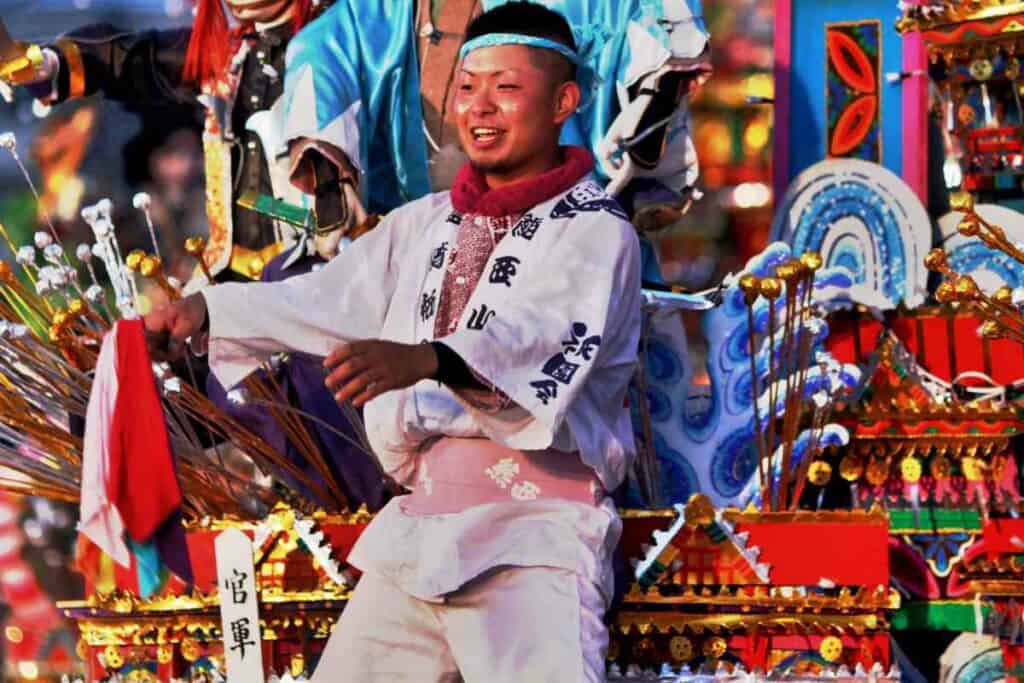
For example, during the Daimonji festival in Kyoto people may wear white kimonos when lighting bonfires. It is said that this helps the spirits of the deceased move on.
On November 15th, it is Shichi-Go-San. A festival that rejoices in the well-being and growth of children.
Specifically for boys aged between three and five years old and girls aged between three and seven years old, the children dress in white kimonos and receive blessings from a local shrine.
It is also common for people to wear white kimonos during the festival of Obon, a Buddhist festival that celebrates the spirits of ancestors. This is done as a sign of purity and respect for one’s deceased relatives.
You may also like 📖
Seijin-No-Hi is a festival that is celebrated on the second Monday in January, honoring young people who are turning 20 years old and are considered adults.
Many young people opt to wear a white kimono to this celebration as a symbol of their bond to their culture.
The white kimono also represents the young adults leaving behind their childhood and moving into adulthood with pure intentions.
Tea Ceremonies
The practice of wearing a white kimono to a tea ceremony in Japan has many symbolic meanings, including:
- Purity: The color white is associated with purity.
- Simplicity: White is a clean, pure, color.
- Respect: You are showing people respect by dressing well.
- Proving you are honoring the occasion.
The ritual of a tea ceremony highlights several symbolic meanings.
By wearing a white kimono, you are showing everyone that you are taking the occasion seriously.
Respect is a big part of Japanese culture, and having respect for important, cultural ceremonies is crucial.
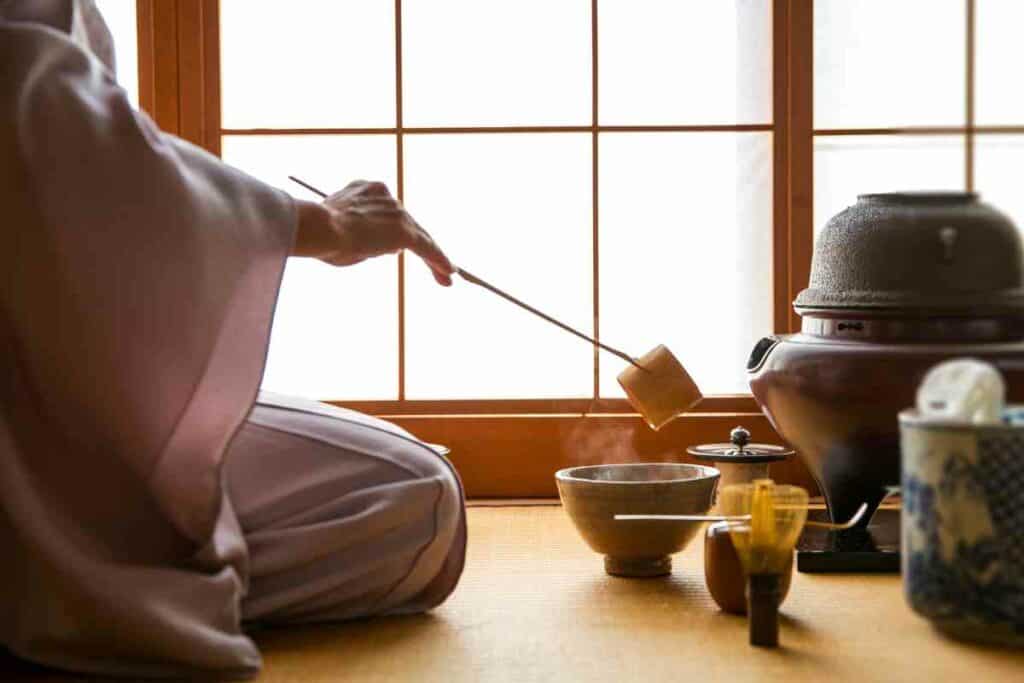
As white is a simple and pure color, the white kimono reflects the values of the delicate tea ceremony beautifully.
It is also important to blend in with the surroundings during this ceremony, to create a sense of harmony with one’s surroundings.
Wearing bright colors or patterns would be seen as distracting from the beauty of the tea ceremony.
Final Thoughts on What Does a White Kimono Mean
The white kimono is a traditional symbol of purity, innocence, and respect. Reserved for incredibly special, formal, occasions only.
In modern-day Japan, the white kimono is often seen as a high fashion statement and has been re-created by many top designers.
This has brought the white kimono back into mainstream view in the past few years.
- 7 Best Japanese Sunscreen Products You Can Buy Online
- 5 Best Japanese Makeup Brushes for a Flawless Finish
- 7 Benefits Of Tatami Mats You Should Know
- The Best Furoshiki Wrapping Cloths: Inspiration, Ideas & Cloths You Can Buy
- Cool Tenugui Towels (10 Best Ones with Bold Japanese designs)
- Japanese Yukata Ideas & Inspiration (20 Creative Ideas)



